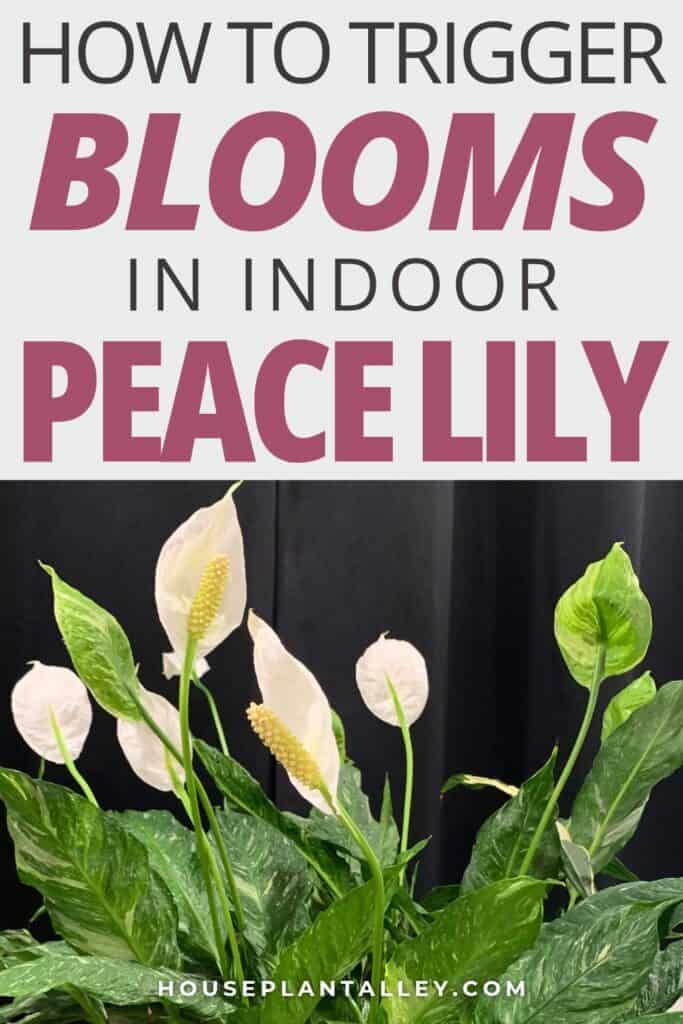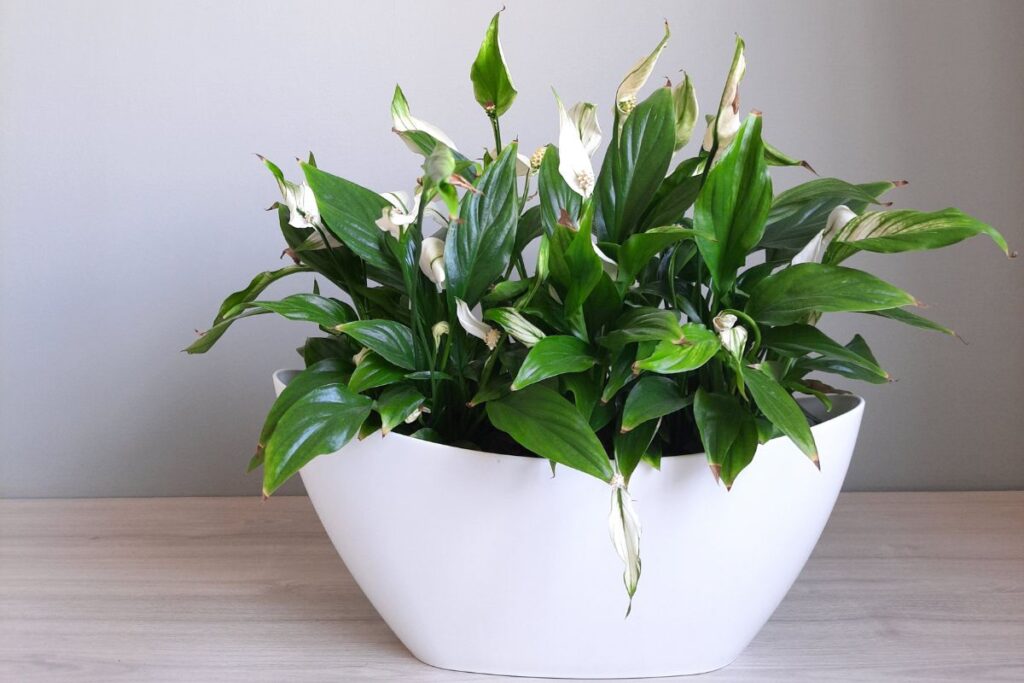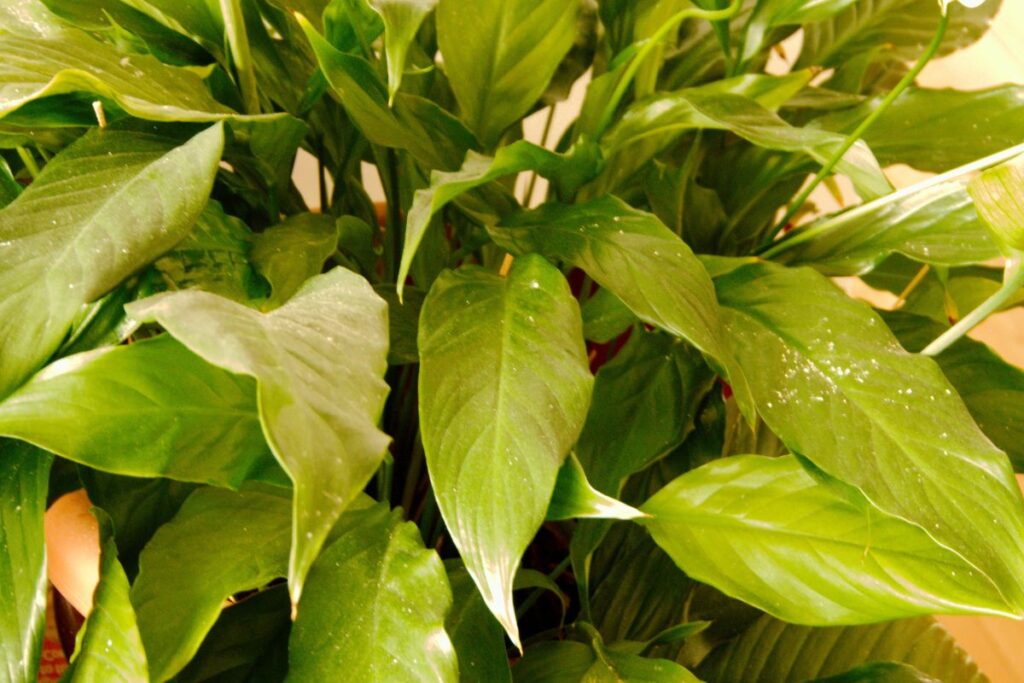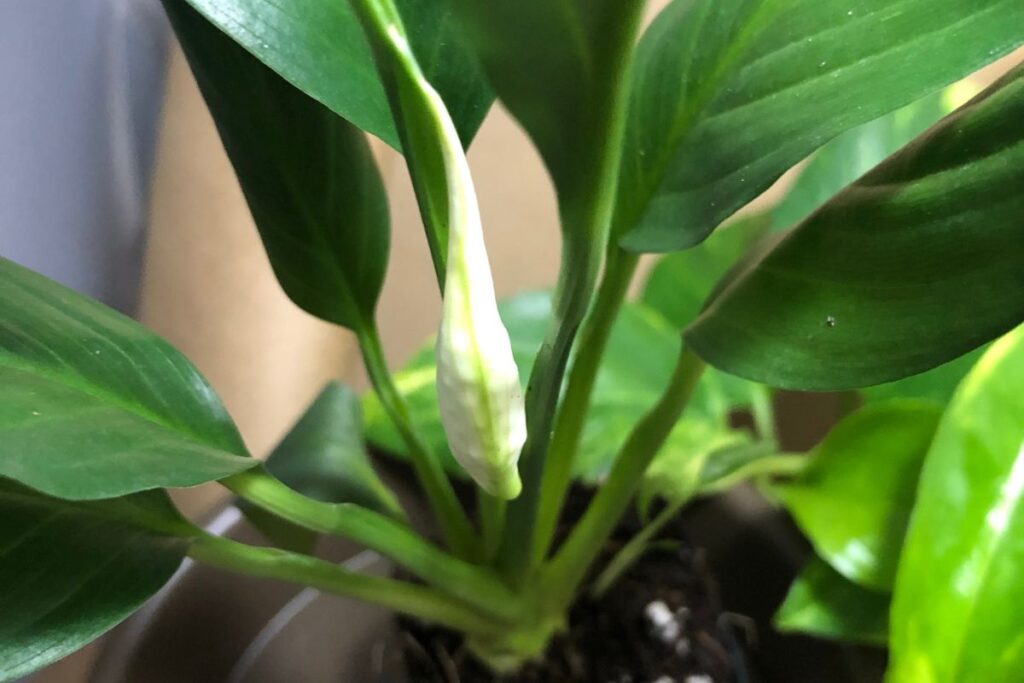Welcome to the world of peace lilies! These beautiful plants bring a touch of nature to any room, and they can even flower with proper care. Unfortunately, if your peace lily isn’t blooming, you may be wondering what you’re doing wrong. Don’t worry—we’ve got all the information you need to help make that gorgeous bloom happen.

In this article, we’ll discuss why your peace lily isn’t flowering and provide tips on how to get them in bloom again. We’ll also answer questions about how often they flower so that you can keep your plant looking its best and enjoy those beautiful blooms year-round! So let’s dive in and learn more about keeping our peace lilies happy and healthy.
Contents
How To Make My Peace Lily Bloom?
Light Requirements
You need to ensure your peace lily gets plenty of natural or artificial light to help it bloom. Natural sunlight is best, as long as it’s not too intense and you don’t forget to keep the plant away from direct heat sources. If you can’t provide natural sunlight, you should invest in bright fluorescent lighting for your peace lily instead.
Correct Watering
Watering your peace lily correctly is essential for its blooming success—don’t let it miss out on all the beauty it could offer! To ensure your peace lily is always healthy and happy, you’ll want to pay close attention to the quality of water. Root health is key—if there’s poor water quality, then the plant won’t be able to absorb what it needs. Try using filtered or distilled water for watering, as this will help keep your peace lily’s root health in top shape.
Be careful not to over-water though, as this can lead to root rot and other issues that can hinder its growth. Keep an eye out for any discoloration in the leaves or wilting; these are signs you need to adjust your watering routine accordingly. With proper care and attention, you’re sure to have a beautiful peace lily blooming soon!

Maturity
For your peace lily to bloom, it needs to reach maturity—and that won’t happen overnight. Growing plants depends on a number of factors, including the size of the plant and the potting mix used. A mature peace lily is usually between 18 and 24 inches tall which can take anywhere from 9 months to 2 years for it to reach its full height when grown in proper conditions. With adequate nurturing, you should be able to enjoy watching your peace lily bloom periodically!
Flowering Season
Once your peace lily reaches maturity, it’ll start producing blooms throughout the year. To ensure that you get plenty of blooms during the flowering season, it’s essential to provide your plant with the right environmental conditions. The soil quality should be maintained at a high level and pests kept away through regular pest control treatments. Furthermore, humidity levels should also be monitored closely for optimal results. If these areas are taken care of properly then you can expect lots of beautiful blooms from your peace lily during its flowering season.
Related Post:
How Long Does A Peace Lily Bloom?
Fertilizing Well
Fertilizing correctly is key for any blooming flower—and especially important for your peace lily! It’s best to use mild fertilizer or compost tea every two weeks during the growing season and once a month during winter months. Following these steps will ensure that your lily receives all the necessary nutrients needed for healthy growth and blooms!
Keep The Plant Stress-Free
Now that you know the importance of fertilizing your peace lily, it’s time to explore ways to keep it stress-free. One way to do this is to make sure your plant isn’t root-bounding, or having too many roots in the pot. If you notice that your peace lily’s roots are coming out of the drainage holes, you should repot it in a larger container with new soil.
When transplanting, use a container that is about two inches wider than its current one and mix in some perlite for better drainage. You can also try increasing the humidity levels around your plant by misting it regularly or placing it on a tray filled with rocks and water—just be sure not to let the bottom of the pot sit directly in the water!
Why Is My Peace Lily Not Flowering?

If your peace lily isn’t flowering, it could be due to a number of factors:
Age of the Plant
When it comes to understanding why your peace lily isn’t blooming, the age of the plant is a major factor. Peace lilies typically bloom when they reach maturity, usually around 1-2 years old. This means that if your plant is younger than this, it may not flower yet. The size of the plant also plays an important role in determining how soon it will bloom. If you have a larger-sized peace lily, then it might be more mature and ready to produce flowers sooner than a smaller one.
Lack of Nutrients
Another possible cause for your peace lily not blooming is a lack of nutrients. Fertilizing frequency plays an important role in keeping the soil quality at an optimal level. If you are under-fertilizing, your plant may be experiencing deficiencies that could be preventing it from flowering. Make sure to check the instruction label and fertilize accordingly.
Low Light
Not getting enough light can be another factor preventing your plant from flowering. If the room that your peace lily is in doesn’t get a lot of natural light, you’ll need to supplement with grow lights. Low light levels can prevent blooming and cause the leaves to become pale or yellowed, so make sure you’re providing at least 12 hours of bright light each day.
Temperature
Ensuring that your peace lily is placed in a warm, draft-free area of the home is paramount for blooming success. Temperature fluctuations can cause shock, which can damage the plant and prevent it from blooming. Aim to keep the area where you place your peace lily between 65-75°F with moderate humidity levels and air circulation. If you’re having trouble controlling the temperature and humidity in its current spot, consider relocating it to somewhere more suitable. Monitor temperature changes and adjust accordingly to ensure your peace lily doesn’t experience any transplanting shock.
Time of Year
Now that you know the temperature needs of your peace lily, it’s important to understand the time of year in which it will bloom. Peace lilies typically bloom in the spring and summer months when humidity levels are highest. To ensure that your peace lily blooms during these times, pay attention to how much water you’re giving it—overwatering prevention is key! Additionally, consider repotting your plant every two or three years to ensure there is enough space for growth. Finally, provide plenty of humidity control by misting your plant with a spray bottle regularly. With this combination of temperature and humidity regulation, you’ll be sure to have beautiful blooms come springtime!
Can You Force A Peace Lily To Bloom?

You can try encouraging your peace lily to bloom by providing the right conditions. With the right humidity levels, potting soil, and temperature, you can create an environment where your peace lily feels safe from environmental stress. Providing a home for your plant that meets its needs can help it thrive and give it the best chance of blooming.
If the environment still isn’t quite right for your peace lily to bloom, there are other steps you can take to achieve results. Try adding fertilizer that is specifically designed for flowering plants, like potted Peace Lilies. This will provide extra nutrients so that your Peace Lily has all of the elements needed for growth and flowering. You may also need to adjust light levels as too little or too much light can slow down blooming cycles in some plants.
How Often Does A Peace Lily Flower?
Encouraging a Peace Lily to flower can be tricky, but it typically blooms once or twice a year. Depending on the season, the dormancy period of these plants can vary, however, they usually bloom in late Spring and/or early Summer. To ensure your plant is healthy enough to bloom during this time frame, you should pay close attention to insect damage and humidity levels. If there are any signs of pests or the soil has become dry, take immediate action to rectify the issue. Also, providing your Peace Lily with adequate humidity levels is necessary in order for it to reach its full potential during its blooming cycle.
